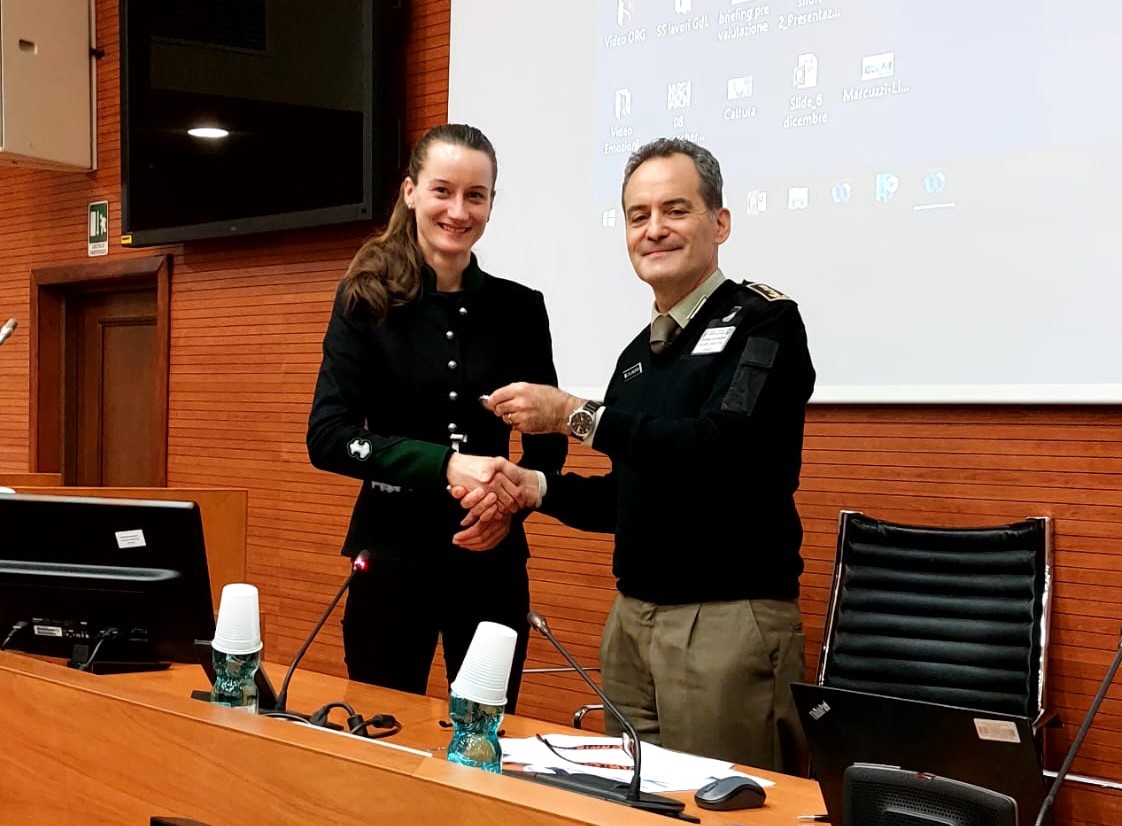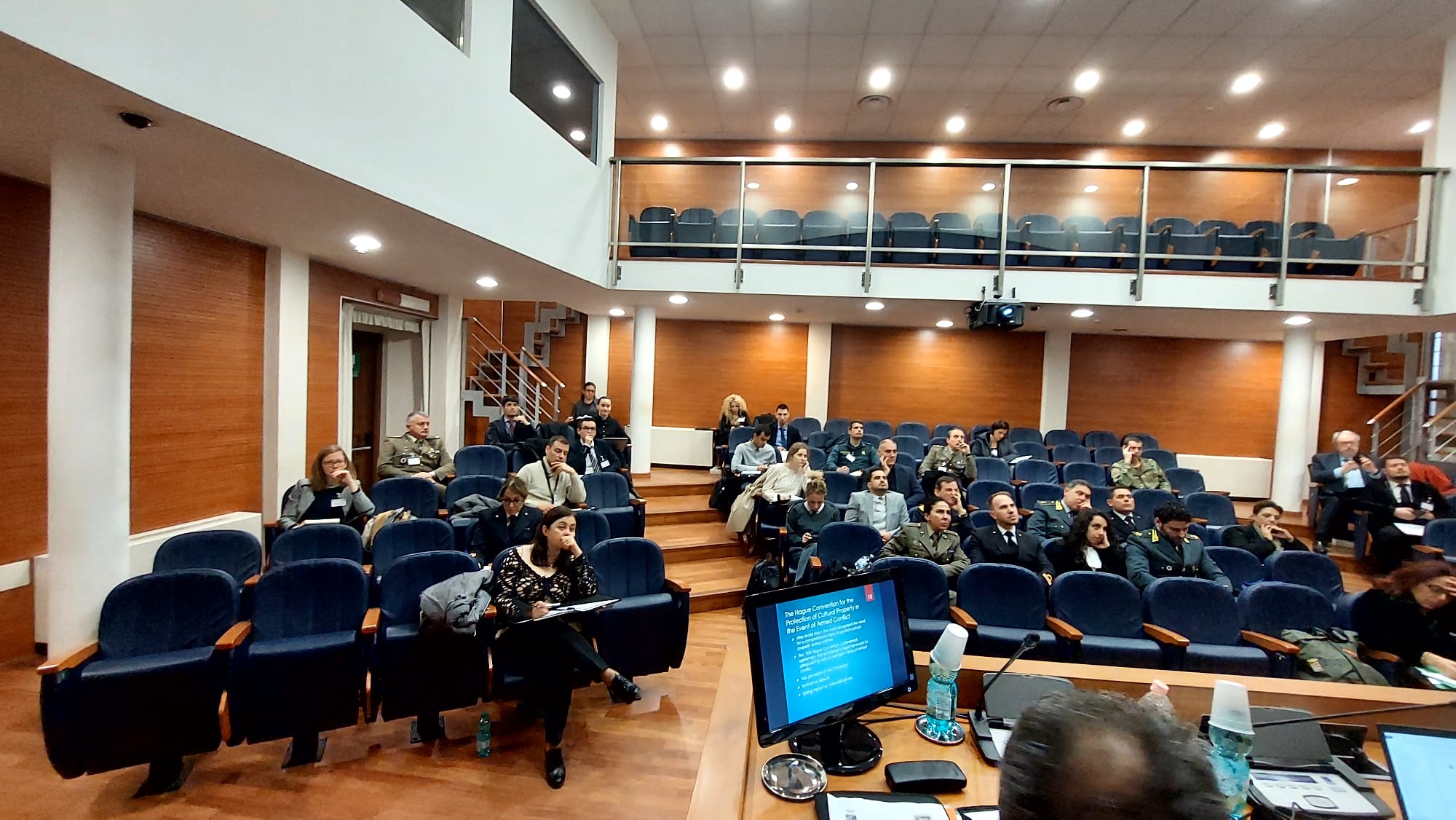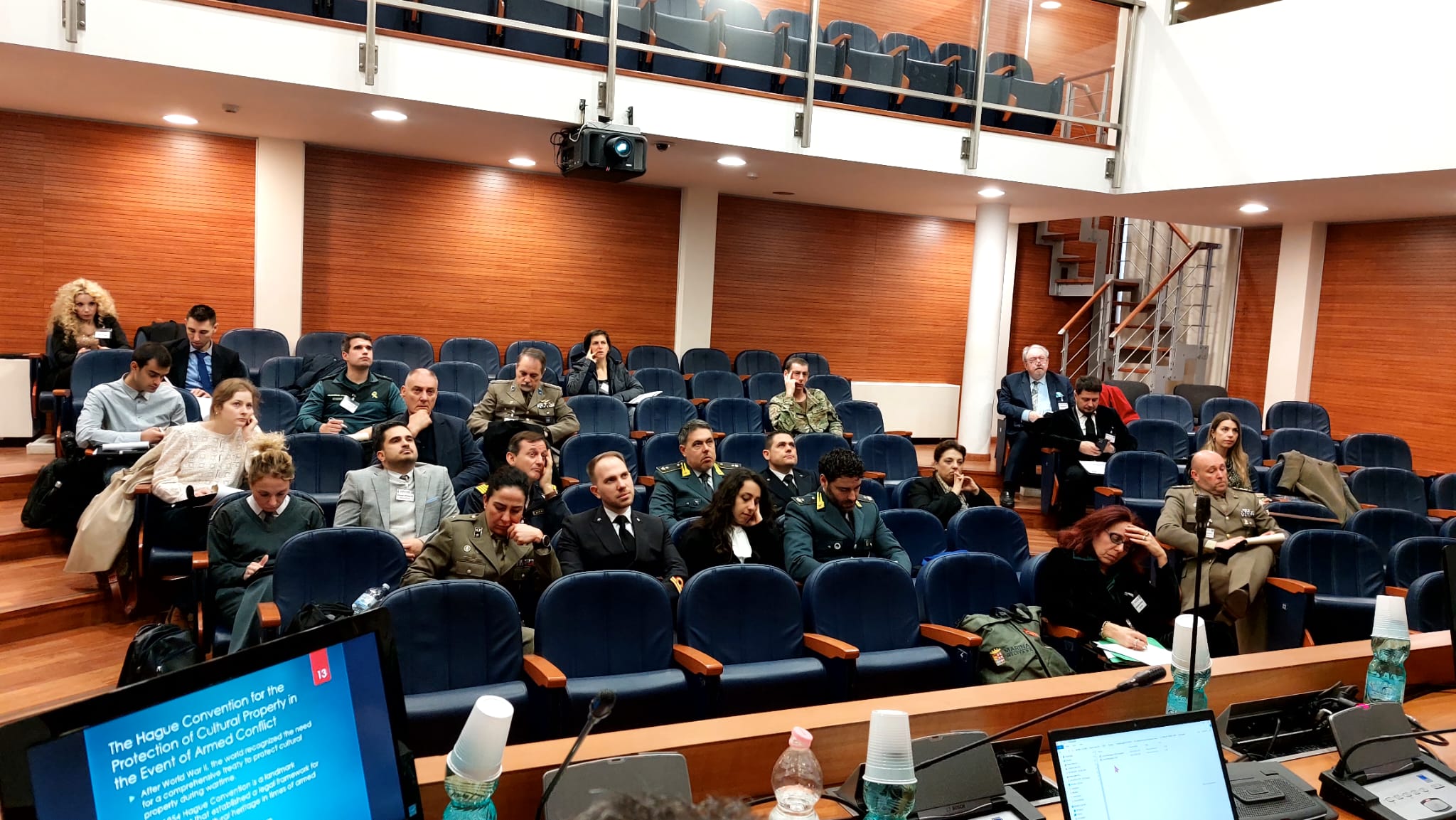 This quote from ProCultHer-Net, an Italian project co-funded by the Directorate-General for European Civil Protection and Humanitarian Aid Operations (DG-ECHO), clearly explains the importance of raising awareness of the need to protect cultural property and heritage in the EU’s sphere of activity.
In this framework, the Italian Centre for Higher Defence Studies (CASD) this year organised the Cultural Property Protection Course for the first time, under the auspices of the European Security and Defence College (ESDC). The course was held with great success on 11-15 March 2024 on the premises of the CASD, where participants had the opportunity to engage with lecturers from different prestigious academic institutions and CSDP missions and operations.
This quote from ProCultHer-Net, an Italian project co-funded by the Directorate-General for European Civil Protection and Humanitarian Aid Operations (DG-ECHO), clearly explains the importance of raising awareness of the need to protect cultural property and heritage in the EU’s sphere of activity.
In this framework, the Italian Centre for Higher Defence Studies (CASD) this year organised the Cultural Property Protection Course for the first time, under the auspices of the European Security and Defence College (ESDC). The course was held with great success on 11-15 March 2024 on the premises of the CASD, where participants had the opportunity to engage with lecturers from different prestigious academic institutions and CSDP missions and operations.
 The programme was carefully designed to meet the participants’ needs and interests, establishing the basis for an integrated and holistic approach to the protection of cultural property during crises, based on good practices. The joint efforts of the ESDC and the CASD made for five days of in-depth learning and constructive exchange for over 30 participants with military, civilian and diplomatic backgrounds from 12 EU Member States and a number of CSDP missions.
The course started with an opening speech delivered by Prof. Amirante, who set the scene by discussing the legal framework for the protection of cultural heritage. The course continued with contributions from several qualified and top-flight professors, experts and policy officers, who covered topics such as cultural property protection challenges in military operations, current EU projects relating to cultural property protection, cultural property crime during conflicts and crisis, internet-facilitated organised crime the Blue Shield approach to civil and military cultural property protection, the role of UNESCO, and international cultural heritage law. The final lecture was delivered by Dr Kieran Doyle, who stressed the importance of the cultural rights of minorities.
The programme was carefully designed to meet the participants’ needs and interests, establishing the basis for an integrated and holistic approach to the protection of cultural property during crises, based on good practices. The joint efforts of the ESDC and the CASD made for five days of in-depth learning and constructive exchange for over 30 participants with military, civilian and diplomatic backgrounds from 12 EU Member States and a number of CSDP missions.
The course started with an opening speech delivered by Prof. Amirante, who set the scene by discussing the legal framework for the protection of cultural heritage. The course continued with contributions from several qualified and top-flight professors, experts and policy officers, who covered topics such as cultural property protection challenges in military operations, current EU projects relating to cultural property protection, cultural property crime during conflicts and crisis, internet-facilitated organised crime the Blue Shield approach to civil and military cultural property protection, the role of UNESCO, and international cultural heritage law. The final lecture was delivered by Dr Kieran Doyle, who stressed the importance of the cultural rights of minorities.
 Participants took also part in a very engaging group exercise called ‘The Ancient Temple’. This exercise saw Dr Anna Kaiser deliver a lecture on cultural property protection in the 21st century, after which participants were divided into groups and had the opportunity to put into practice what they had learnt from the lecture.
The highlight of the course was a visit to the Carabinieri Command for the Protection of Cultural Heritage, based in the centre of Rome. Before visiting the vault where all works of art are guarded and protected, course participants received two very interesting briefings on the Italian approach to cultural heritage and how the Carabinieri work together with different countries within and outside Europe.
We would like to thank all the speakers for their engagement, all the participants for their active contributions, and last but not least, the Centre for Higher Defence Studies and the course director for their very constructive cooperation.
Participants took also part in a very engaging group exercise called ‘The Ancient Temple’. This exercise saw Dr Anna Kaiser deliver a lecture on cultural property protection in the 21st century, after which participants were divided into groups and had the opportunity to put into practice what they had learnt from the lecture.
The highlight of the course was a visit to the Carabinieri Command for the Protection of Cultural Heritage, based in the centre of Rome. Before visiting the vault where all works of art are guarded and protected, course participants received two very interesting briefings on the Italian approach to cultural heritage and how the Carabinieri work together with different countries within and outside Europe.
We would like to thank all the speakers for their engagement, all the participants for their active contributions, and last but not least, the Centre for Higher Defence Studies and the course director for their very constructive cooperation.



